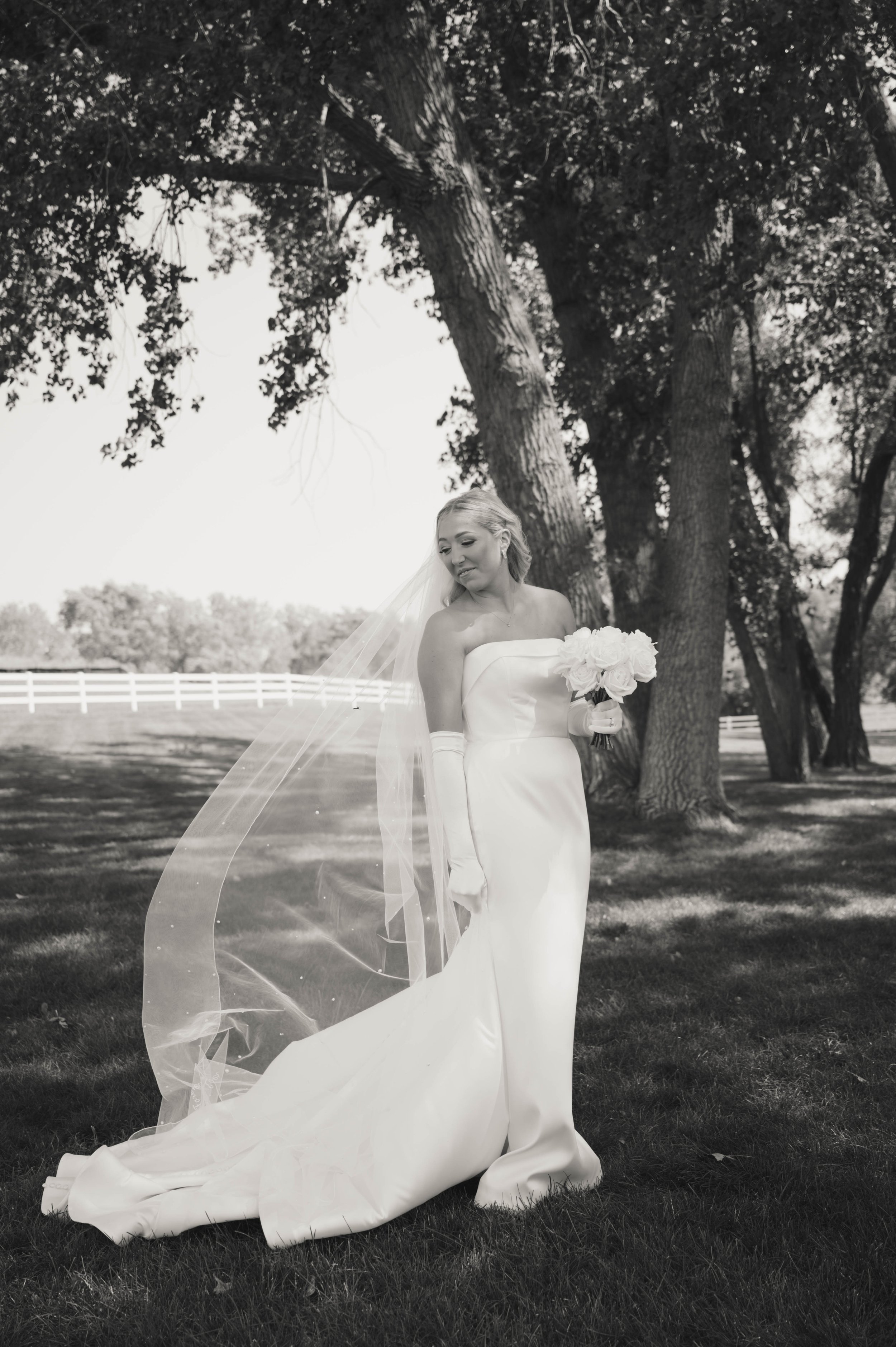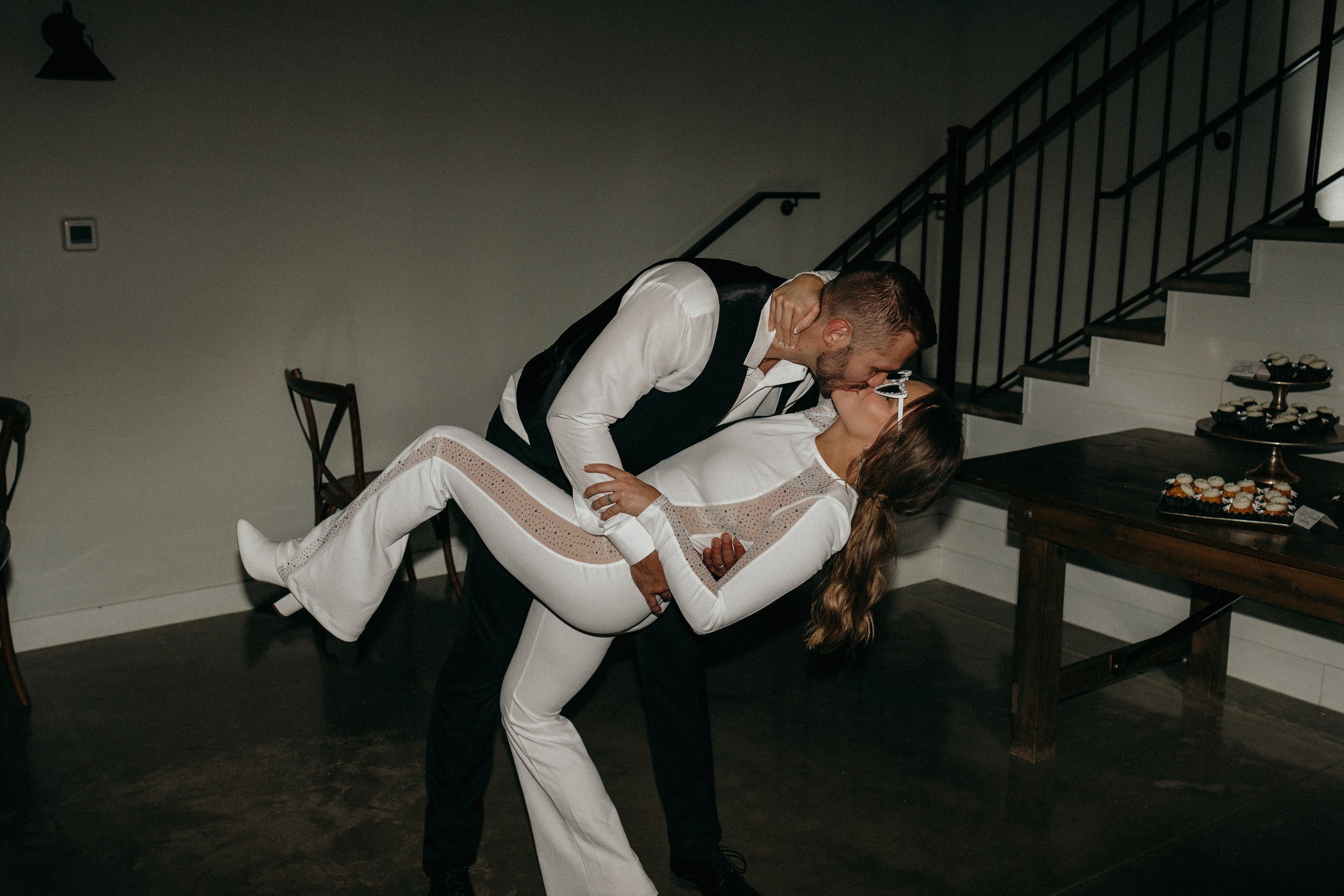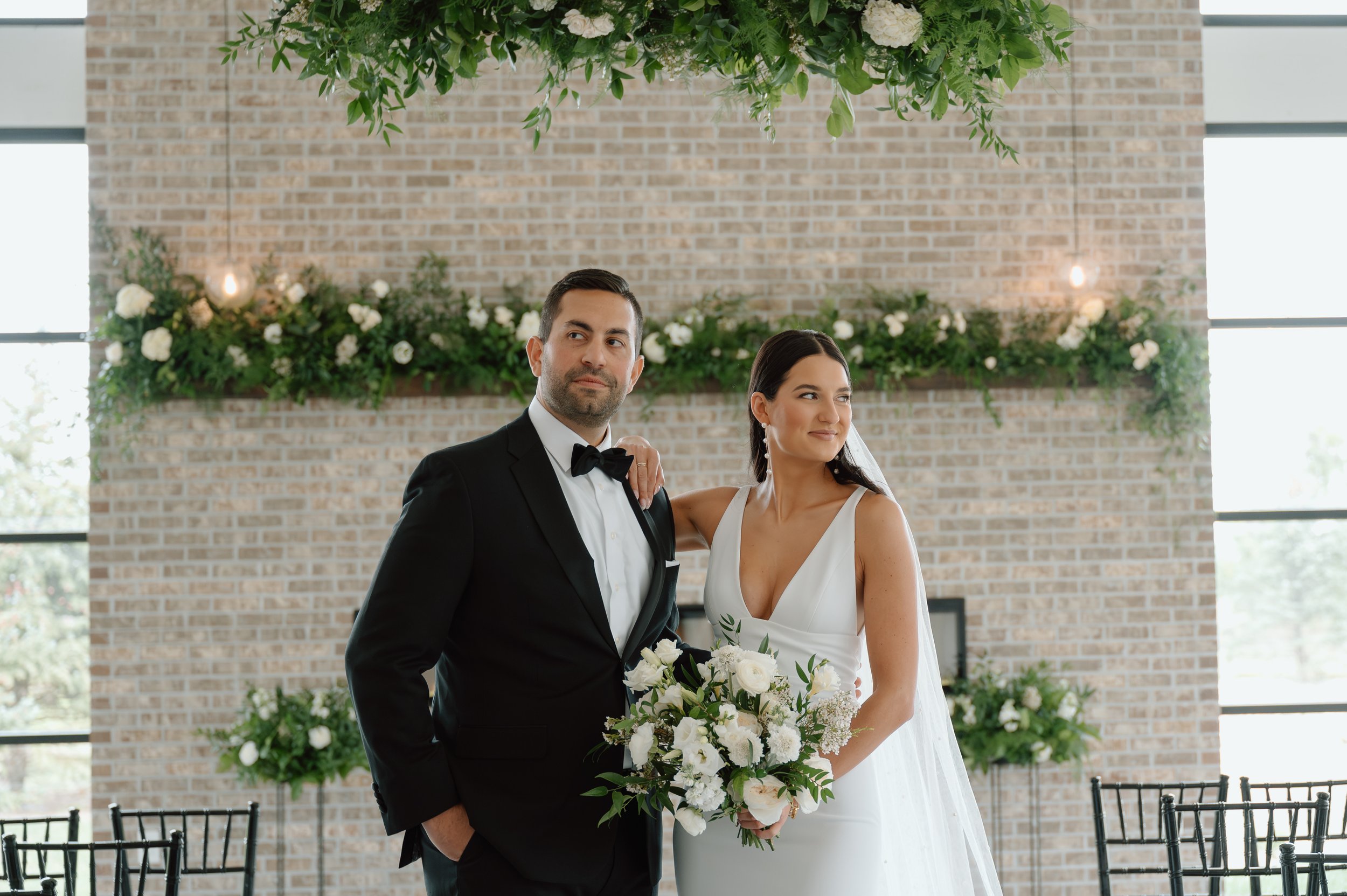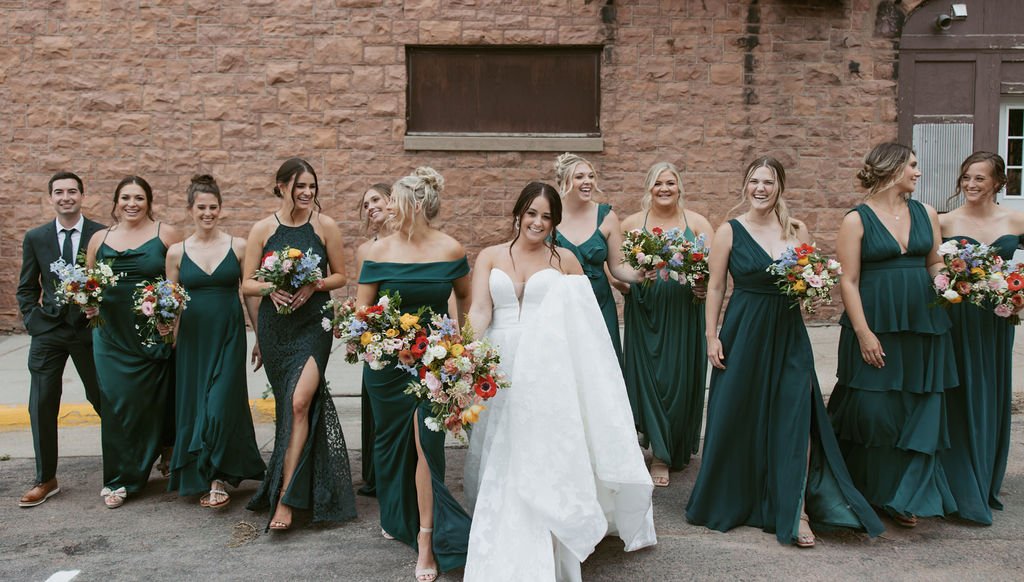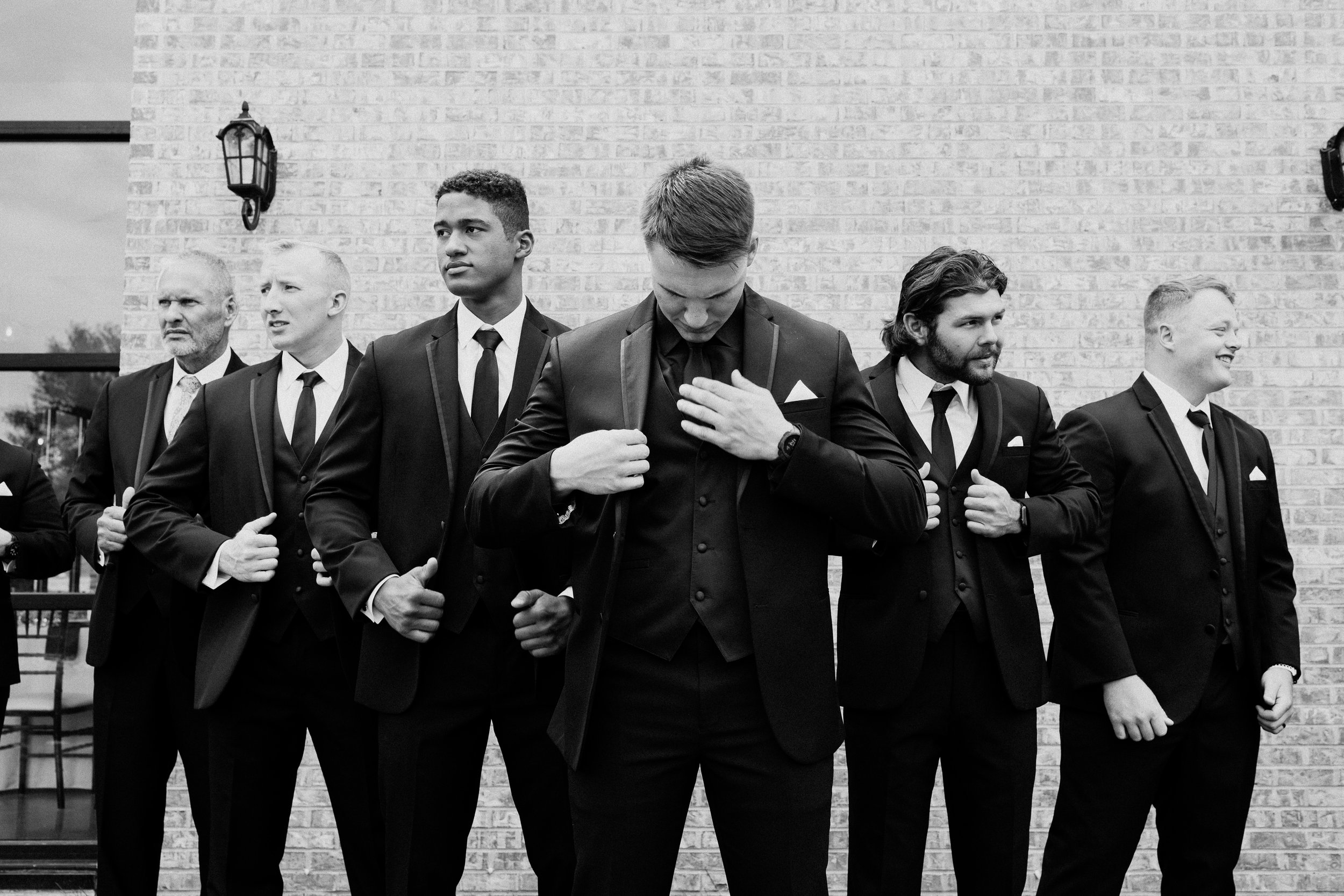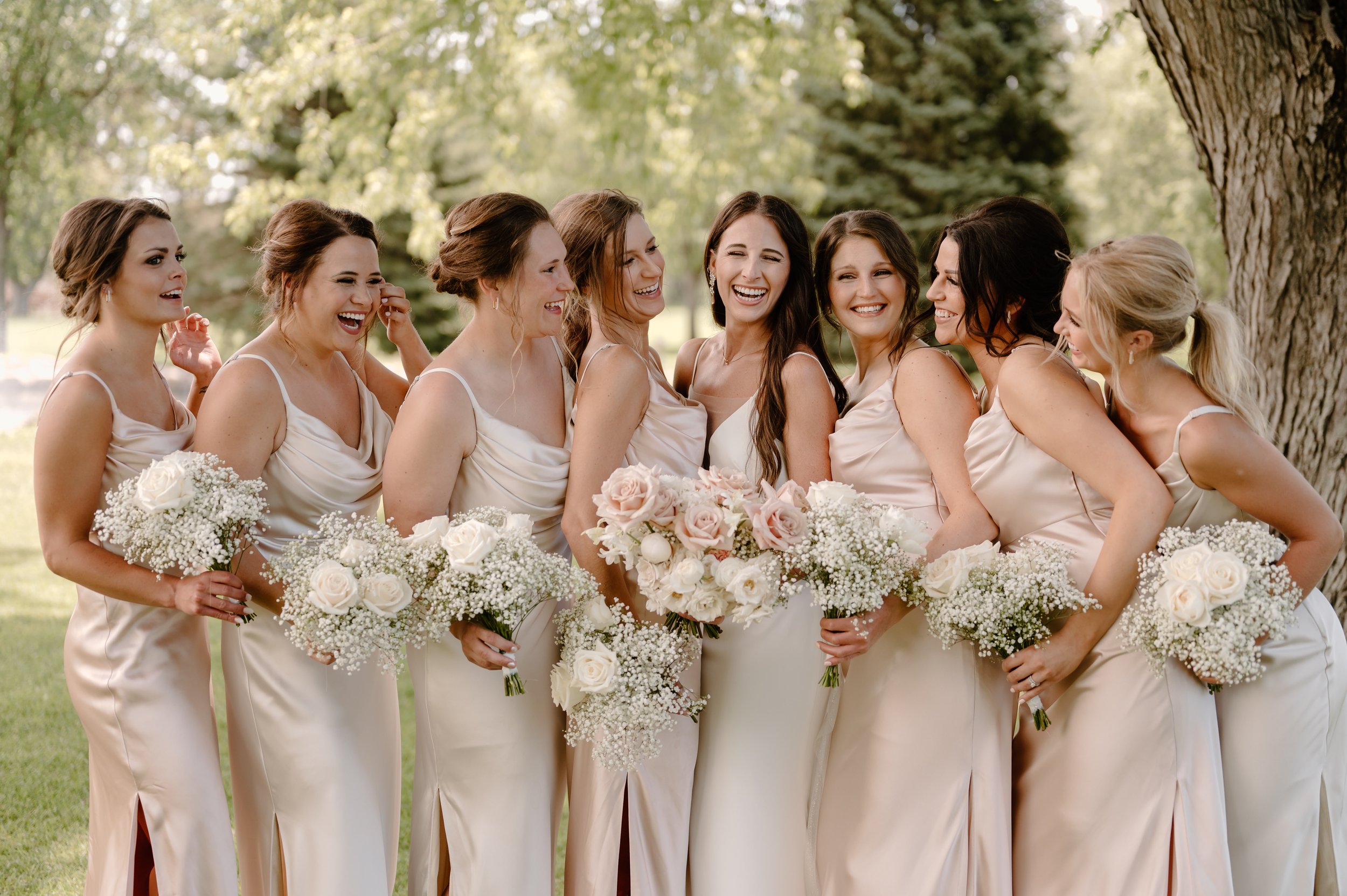A Traditional Wedding: where weddings come from
Weddings are built on centuries of cultural, familial, and personal traditions, but we don’t always think about where they come from. Wedding dress shops are full of white and ivory gowns that look unlike anything we wear in our regular lives. Bouquets and boutonnieres are just flowers, right? And why do we make a whole group of our friends dress identically and stand next to us at the altar? Modern weddings are shaped by centuries of weddings before them, and all our traditions have stories to tell.
Left Photo Credit: Sydney Leigh Photography • Right Photo Credit: Tagan Rayne Photography
WHITE WEDDING GOWN
As much as the white wedding gown has become a cultural staple of Western weddings, this tradition is only a few generations old. For most of history, brides wore the nicest dress they had to get married, or they bought something new they could wear again. Then, in 1840, Queen Victoria chose a white lace gown for her wedding to Prince Albert. She wanted to style herself as a bride rather than a queen, so the lace showed both her wealth and her youth. Queen Victoria was a fashion icon of her time, and wealthy brides who could afford it made sure to wear white for their weddings too.
That may sound like the beginning of bridal gowns as we know them, but the trend stayed with the ultra-rich for almost a century longer. Brides continued to opt for practicality over a specific look. More of them may have been wearing white, but the dresses they chose usually looked more like the fashions of the time than our bridal gowns today. In the 1960s and 70s, when clothes and culture became looser and less structured, good old Queen Victoria’s dress became a reminder of tradition and ritual. Brides wore white gowns with historically inspired silhouettes to ground themselves in tradition rather than the wild culture of the moment. From then on, Western wedding dresses became the white gowns we know today.
Left Photo Credit: Sydney Leigh Photography • Right Photo Credit: Britany Moser Photography
CARRYING BOUQUETS
Flowers have been a part of weddings since at least ancient Rome. Brides then wore flowers and herbs in their hair and on their clothes to bring good luck to the marriage and ward off bad luck. They used plants like dill as an aphrodisiac, rosemary for loyalty, wheat for fertility, and thyme, heather, and basil for protection. The superstition around flowers and herbs continued into the Middle Ages where they added garlic and spices to keep bad spirits away. The flowers also served a practical purpose - covering up unpleasant smells like body odor and decay from plague. Brides in Elizabethan England (think Shakespeare) started to hold small bouquets and even make bouquets to give out as wedding favors.
By the time trendsetter Queen Victoria got married, flowers were developing their own coded language. Brides would place specific blooms in their bouquets to show lasting love, passion, fidelity, and all kinds of other romantic ideals. It wasn’t about superstition anymore, but about telling their spouses how they felt. Queen V carried a bouquet, as did her bridesmaids, and we kept the spectacle of it, if not the symbolism.
Left Photo Credit: Ivory + Fern • Right Photo Credit: Sydney Leigh Photography
BRIDAL PARTIES
In ancient Rome and many other cultures historically, bridesmaids dressed like the bride as another superstition against evil spirits. They wanted to confuse the spirits who might try and curse the couple by making everyone look the same. But it wasn’t just evil spirits the bridesmaids needed to confuse. The bride may have needed to travel a long distance to meet her groom, or even just take a carriage ride from her home to the church. Most weddings involved a financial transaction, and the bride typically came with a dowry. For that reason, it was not uncommon for brides to be kidnapped on their way to the altar and held for ransom. Bridesmaids acted as decoys to confuse a potential attacker. Just like the evil spirits, a kidnapper would not immediately have known which well-dressed woman to take.
Groomsmen were the other half of the bride’s defense. They were people the groom trusted to help him defend his bride or steal her back if necessary. The groom stands to the right of the bride, and the best man stands to the right of the groom so that the men could have their sword hands free if they needed to fend off an attacker at the wedding. Thankfully, bridesmaids and groomsmen have much easier roles today. If your friend asks you to be in their wedding, you don’t have to put your life on the line to say yes.
When it comes to your wedding, the choice of which traditions to follow, which to adapt, and which to throw out the window is completely yours! It is fun to see where our traditions come from, but most of us aren’t worried about supporting the British lace industry, keeping the smell of plague away, or potential bride-nappings. We have added our own significance to these traditions, and taken our own spins on them. Sometimes, we choose not to rely on tradition at all. Ultimately, when you walk down the aisle, it is about your celebration, so it should include all the things that are most special to you. Whether that be old traditions or new expressions, the most important part of the day is your “I do”s.
Do you have cultural or family traditions you love in weddings? Tell us about them when you meet with our team! We love learning what our couples use to make their big days special!
xoxo, Rebecca

